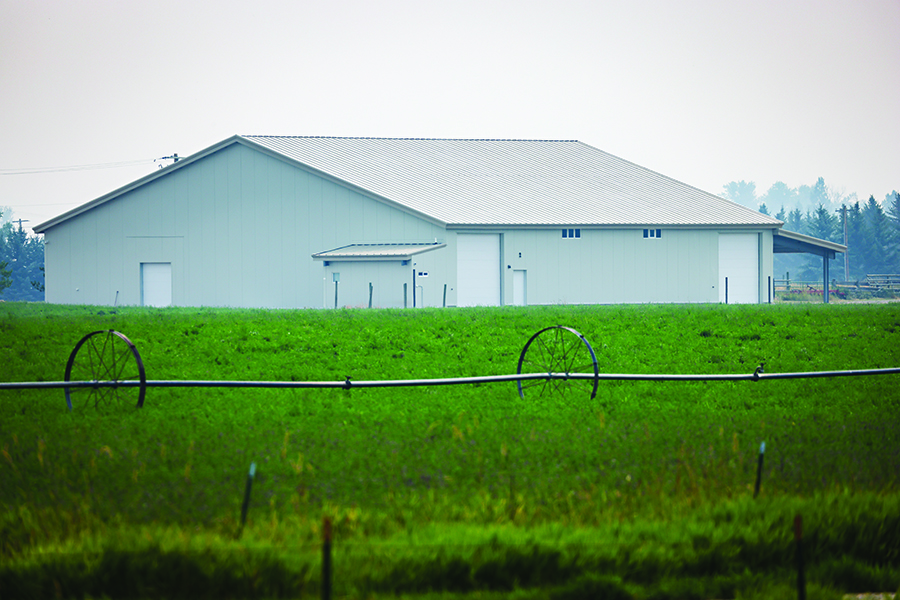Montana Supreme Court Decision Voids Water-use Permit for Creston Bottling Plant
The unanimous decision closes a years-long battle and upholds a lower-court ruling that the Department of Natural Resources and Conservation erred when it allowed a water-bottling company to tap the Flathead River’s aquifer
By Tristan Scott
In a unanimous decision this week, the Montana Supreme Court resolved a seven-year legal dispute over a Creston-area landowner’s right to tap into a groundwater aquifer along the Flathead River and produce up to a billion bottles of water a year, upholding a lower court’s ruling that the Montana Department of Natural Resources and Conservation (DNRC) erred when it granted the bitterly contested water right. The May 16 decision delivered a hard-fought victory to Water for Flathead’s Future, a neighborhood group comprising 10 residents who filed the original lawsuit as petitioners, as well as for the nonprofit conservation organization Flathead Lakers.
“In conclusion, errors of law were committed during the agency’s processing of the application, including the failure to submit all the required data, and a failure to fulfill the agency’s duty to identify and analyze all potentially affected sources,” according to the high court’s decision written by Justice Jim Rice and concurred by all six other jurists. “The errors of law and process undermine confidence in the agency’s determinations … Consequently, this combination of deficiencies leaves us with the definite and firm conviction that, upon review of the whole record … a mistake was made.”
It’s the latest turn in a tortuous legal odyssey that began in 2015, when Montana Artesian Water Co. (MAWC) and its founder, Creston landowner Lew Weaver, asked for and received a permit from the DNRC allowing the company to produce up to 140,000 water bottles per hour, 24 hours a day, seven days a week. In technical terms, the water right authorized Weaver’s company to receive 710 acre feet of water annually, equaling roughly 1.2 billion 20-ounce water bottles.

Although Weaver insisted he would only use a fraction of the water-usage capacity assigned under the right, the bottling operation drummed up considerable attention, fueling concerns among neighbors and residents living near the Egan Slough property and leading to the formation of Water for Flathead’s Future, a group organized to fight the bottling plant while raising objections on multiple legal fronts, including filing two complaints to prevent the facility from beginning production.
“They have now prevailed in this appeal, after seven years of litigation,” according to Rice’s decision. “Objectors marshalled extensive expert testimony and addressed a voluminous record to support their claims. Objectors uncovered the errors in DNRC’s review process that led the District Court, and now this Court, to reject the permit, despite usual deference owed to the agency.”
Darryl James, a spokesperson for MAWC, said the long-awaited ruling was based on a procedural administrative flaw and not on evidence that Weaver’s bottling operation would have had a significant impact on water quality, neighboring wells, aquatic species, or on aquifer levels.
“It falls to procedure, so there is nothing Montana Artesian could have done to modify the project, address its physical impacts or redesign the project,” James said, adding that the high court’s decision that plaintiffs are entitled to attorneys’ fees places an unfair burden on Weaver.

“The biggest concern for Montana Artesian and any business in Montana is the message this sends to applicants seeking a water right in the state,” James said. “This is a frightening message to send to the business community and that is the biggest blow to Montana Artesian Water Company, which will probably be on the hook to the tune of a half-million dollars in attorneys’ fees for something they had no control over.”
Steve Moore, board chair for Water for Flathead’s Future, sees the upshot of the case differently.
“To say that we are thrilled with this result is an understatement,” Moore said. “This decision represents the culmination of our seven-year-long battle to prove in court what we have always known — that Montana Artesian Water Company and the Montana Department of Natural Resources and Conservation violated the law in an attempt to move forward the largest water-bottling plant ever proposed in Montana.”
MAWC’s water right permit from the DNRC and its wastewater discharge permit from the Montana Department of Environmental Quality were challenged in separate litigation, leaving the discharge permit intact. Meanwhile, the state Supreme Court in a separate case last year upheld a citizen-initiated land-use decision that precluded MAWC’s commercial operations in a zoning district prohibiting them.
Although James said it’s feasible that Weaver and MAWC could apply to the DNRC for another water-right permit, he said the years of litigation and uncertainty have taken a toll on the Creston landowner.
“The question is whether it’s worth it,” James said. “This case has never been about the actual impacts. It’s a classic case of NIMBYism and people not wanting a commercial water-bottling plant in their neighborhood. But they organized well and fought this on procedure, which is what environmental groups do. Mr. Weaver and his wife are an aging couple who have been ostracized, so it’s really a matter of whether MAWC has the wherewithal to make another run at it.”
For Moore and his co-plaintiffs, however, the grassroots opposition was sustained on principle, not on NIMBYism (an acronym for “not in my backyard) and the legal triumph helps prevent a dangerous precedent from taking root in the Flathead Valley.
“Simply put, we could not be more proud of our team and our success,” according to Moore. “However, this victory does not just represent a win for us, but stands as a pillar of justice for the entire Flathead Valley community and the citizens of the state of Montana. The message from our state’s highest court is clear: our water is precious and must be protected from corporate greed by faithful adherence to law and process.”